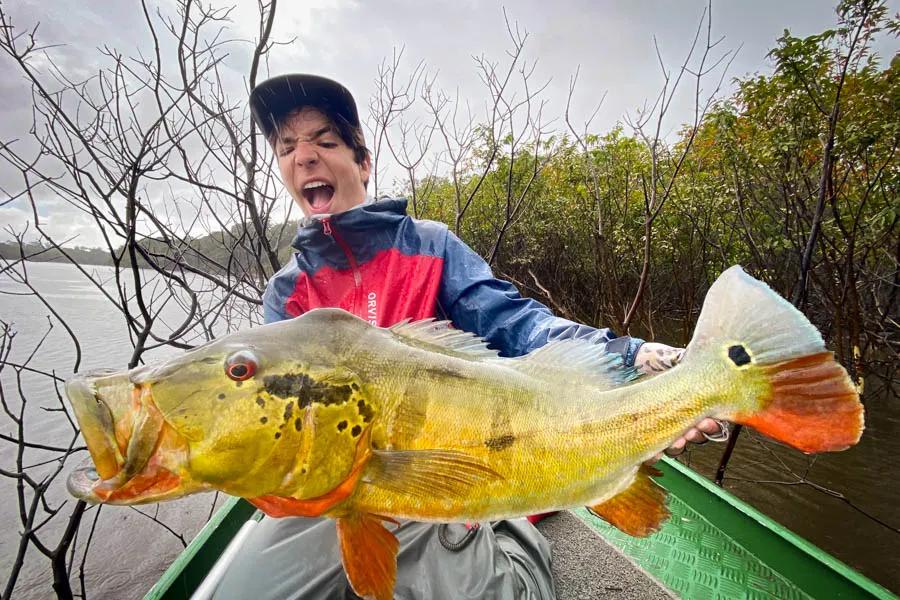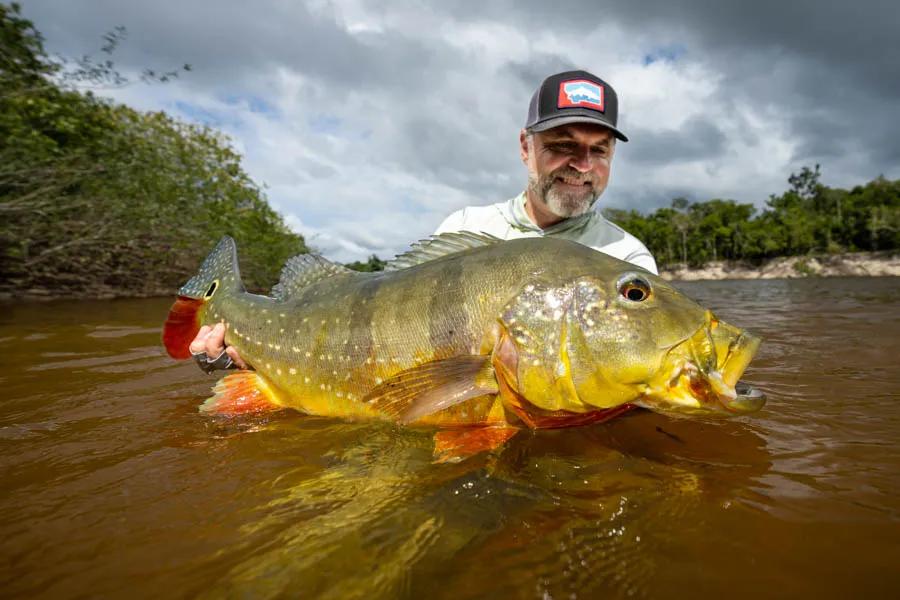
Known as one of the most voracious predatory gamefish on the planet, fly fishing for peacock bass in the Amazon River system is a fly fishing trip everyone should consider. If there were a fish to match the grandeur and vastness of the Amazon, the peacock bass is ideal. With aggressive takes, thrilling jumps, and colorful markings and patterns, landing a peacock bass is thrilling. And, although very unlikely, if the fly fishing for peacock bass in the Amazon happens to be slow, the wilderness fly fishing in the Amazon is an amazing experience all by itself.
Here are some general tips and tricks to help you catch a peacock bass in the Amazon.
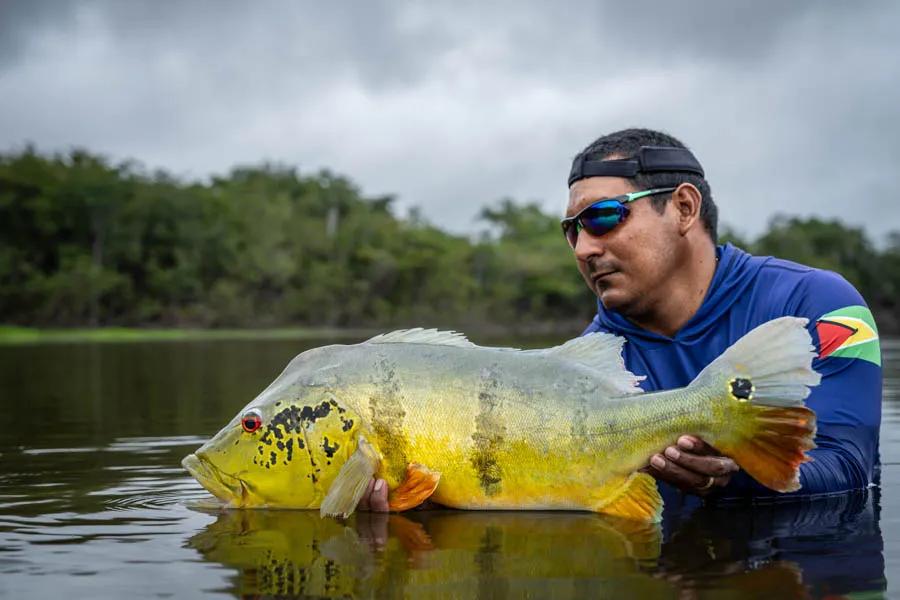
Know the Three Species of Peacock Bass
There are three main species of peacock bass: butterfly, spotted, and temensis. All three are great fish for fly fishing. Butterfly peacock bass are abundant, very aggressive, and have a reputation for being great fighters with high jumps and deep dives. Most butterfly peacock bass weigh between two and eight pounds, but there are plentiful fish over ten pounds. The spotted and temensis peacock bass are both a totally different beast. These two species are the largest of the peacocks and can attain weights of 25 pounds. These peacocks are some of the most aggressive gamefish on the planet. They wander in schools of up to 40 fish and often hunt together working bait into a feeding frenzy causing the surface of the water to erupt. In many cases the baitfish will jump onto land to escape. If you can get your fly into the action, the results are spectacular: a ferocious take, a blistering run, a jump and or a run into structure are just a few of the exciting moments when fly fishing for peacock bass in the Amazon.
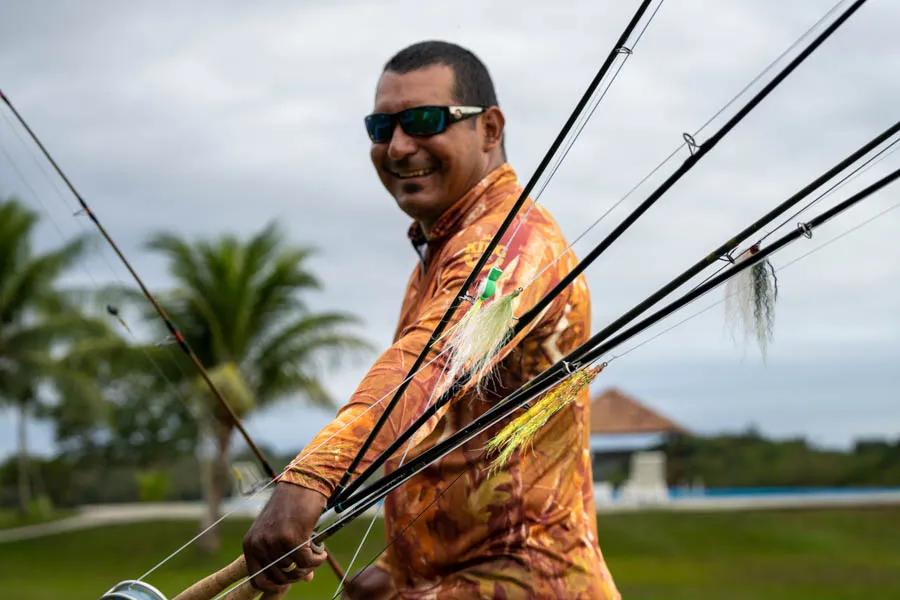
Have the Right Tackle: Leaders and Tippet, Fly Lines, and Flies
The Amazon is a wild place and it is often survival of the fittest. Peacock bass are fit and ferocious predators. Your tackle must match. Most experienced peacock bass anglers fish stout tippets of at least 30-plus-pound fluorocarbon hard or abrasion resistant material. Factor that with the myriads of submerged structure and you must have a strong tippet and leader to muscle large fish away from snags. Floating lines can get it done most of the time, but to target some of the biggest fish and to keep your fly in the “strike zone” longer, fish a sink-tip or full sinking intermediate fly line. With three species of peacock bass to pursue, a variety of flies is important. Generally speaking, bright and colorful streamers and poppers at least 6 inches long are the best; however, if water levels are low and clear, or fish are spawning, choosing a smaller fly might prove more successful. Lastly, topwater flies like poppers and divers bring plenty of excitement but to get the big fish to hit on the surface vary your retrieve from slow to fast to even letting it sit for a while.

Target the Mixing Zones and Depth Changes
The Amazon River system is full of large and small rivers, creeks, and lagoons. And in these waters various depths occur. Just like a quick depth change creates an ambush point for a large brown trout, it does the same for a peacock bass. Fish these and find the big ones. Another place to target when fly fishing for peacock bass are any locations where currents mix, rivers come together, fast water runs against or along structure, eddy lines, foam lines, or any place that can congregate baitfish. More so than any other type of freshwater fly fishing, if you find the baitfish you are likely to find the peacock bass.
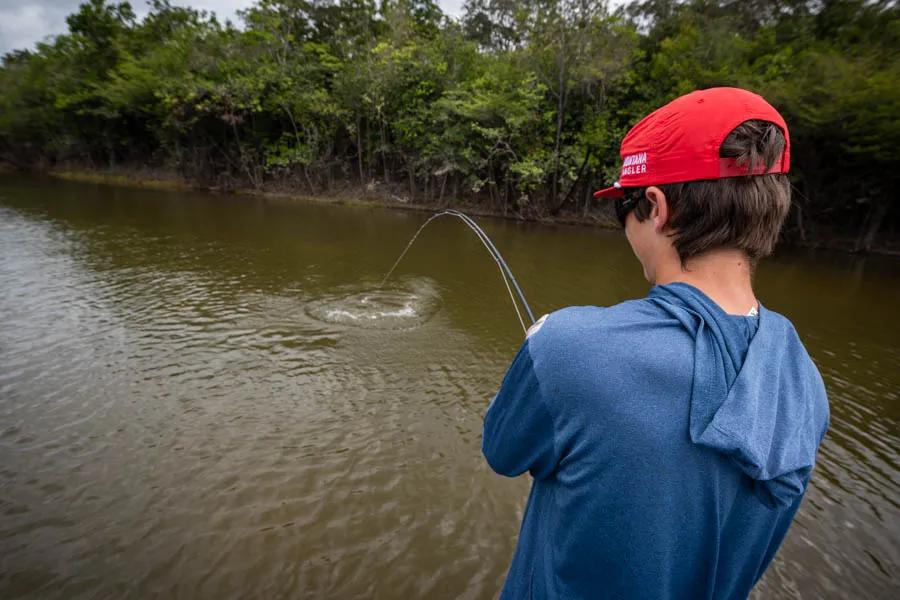
Set It Like You Mean It…and Set It Again
Most peacock bass hits are aggressive, deliberate, and strong. Rarely does a hit occur and the angler is unaware. When a peacock bass hits your fly, you need to hit back…but twice as hard and twice as fast. A trout set—raising the rod and stripping in—won’t even come close. You must power strip set with the fury of a gladiator fighting for their life. Some experienced anglers like to use an “accordion” strip set. That is when you strip to one side and jerk the rod to the other. Regardless if you also move the rod to the side or just power strip, be certain you repeat the power strip a few times until you feel in control, or when your Amazon peacock bass fly fishing guide gives you further instructions.
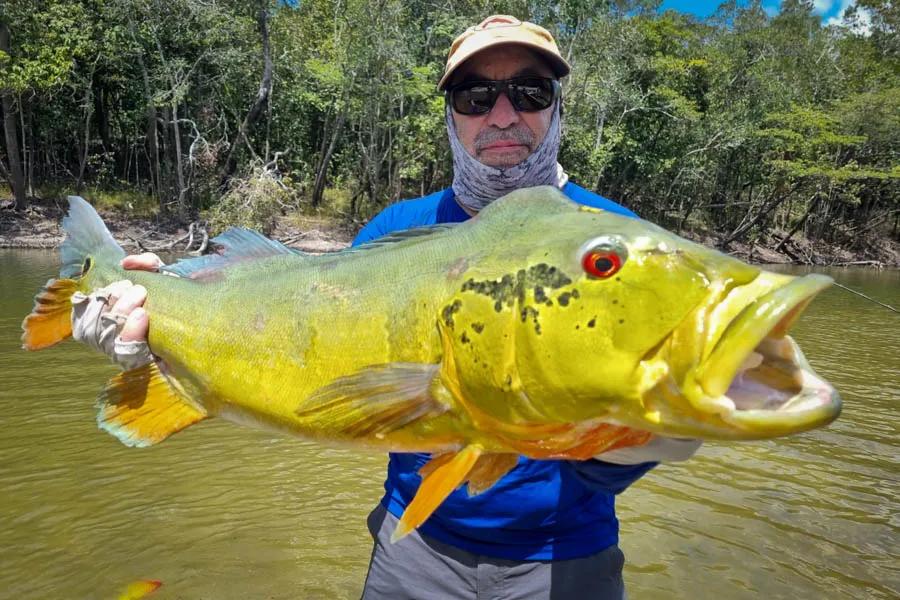
Learn to Fight Big Fish
Strength, size, and structure all work against you the moment you hook a peacock bass. These fish can be big and strong and can muscle their way to freedom by shaking their heads or leaping out of the water. With abundant structure as well, peacock bass often head for cover when hooked. It is crucial to be the one in control from the start and not let the fish gain an inch. Remember…if you’re rigged correctly, your tippet can handle it…but can you keep the pressure on the fish? Apply immediate side pressure and work to disorient the fish by regularly changing the angle of pressure. Be unrelenting in applying steady pressure and always be sure to control any extraneous fly line that may collect when stripping or after casting when fly fishing for peacock bass in the Amazon.
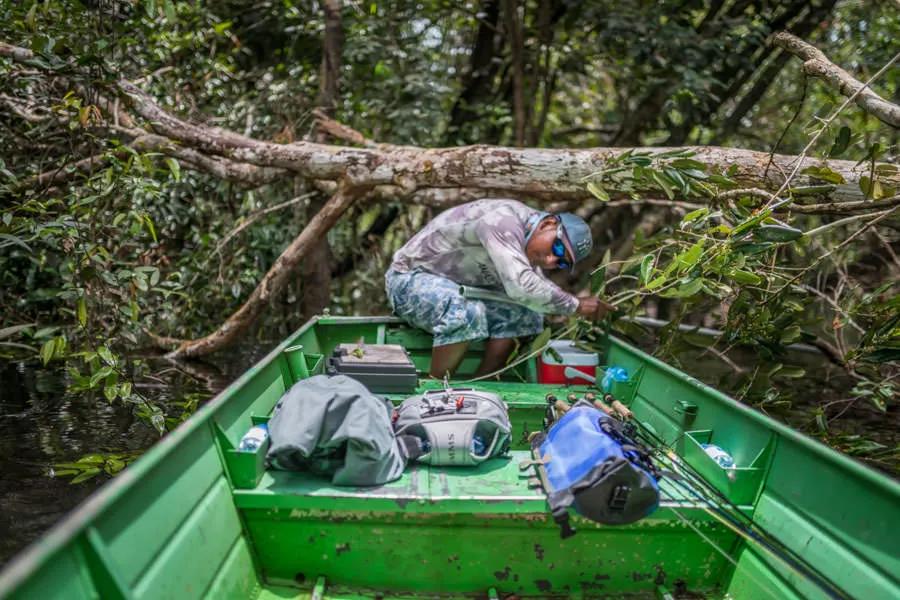
Lastly, but Perhaps the Most Important: Trust the Instincts of Your Guide
Like many great fly-fishing destinations, local knowledge and time on the water are crucial for success. Odds are good that if you are considering a trip to the Amazon to pursue fly fishing for peacock bass it will not be a DIY trip. Because many of the fly-fishing lodges in the Amazon have been around for a while, their guides are just as knowledgeable as they are passionate about you catching fish. It is likely a fly-fishing guide in the Amazon has been exploring their waters for most of their life. They also make their living by putting people onto fish. Trust both of those facts and work in tandem with your guide and you will most likely catch more and bigger peacock bass.
Peacock bass are beautiful and hard-fighting fish and fly fishing for them in the mysterious and massive Amazon River system is tailor-made for these special gamefish. At first, a fly fishing trip to the Amazon for peacock bass might seem intimidating, but doesn’t any fish worth catching come with a little bit of risk and excitement?
